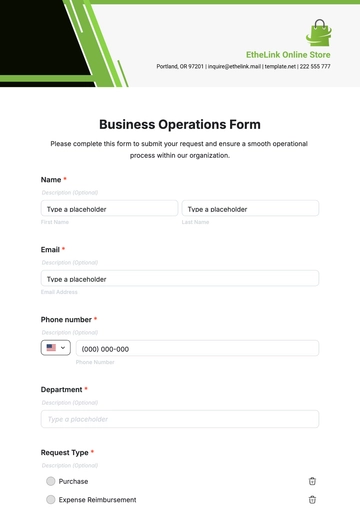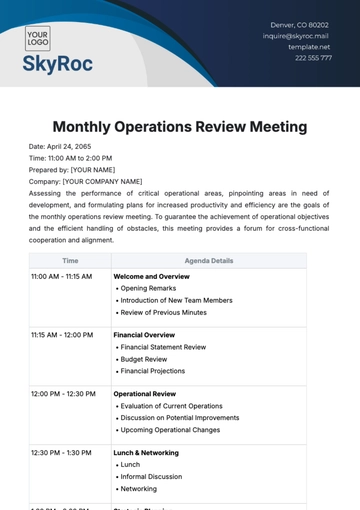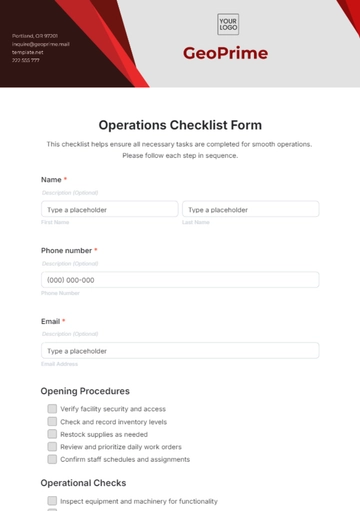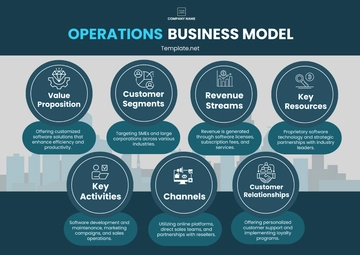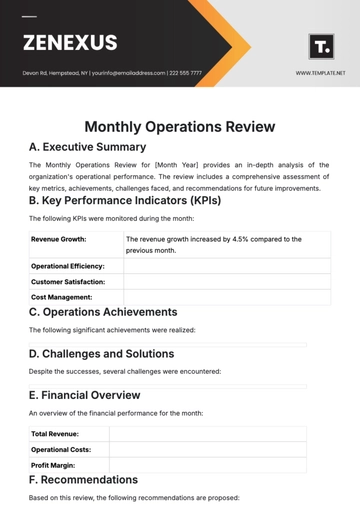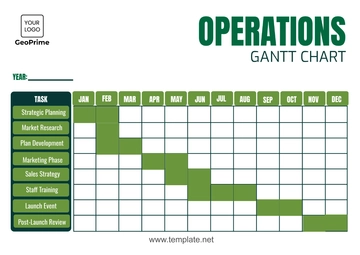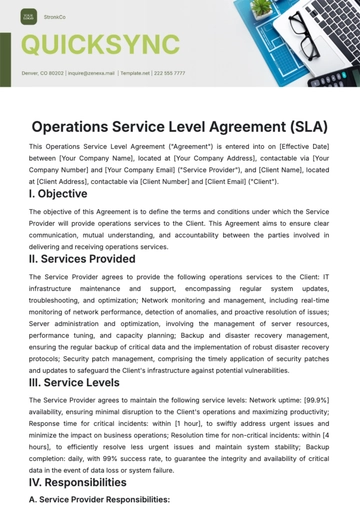Free Operations Financial Compliance Rubric
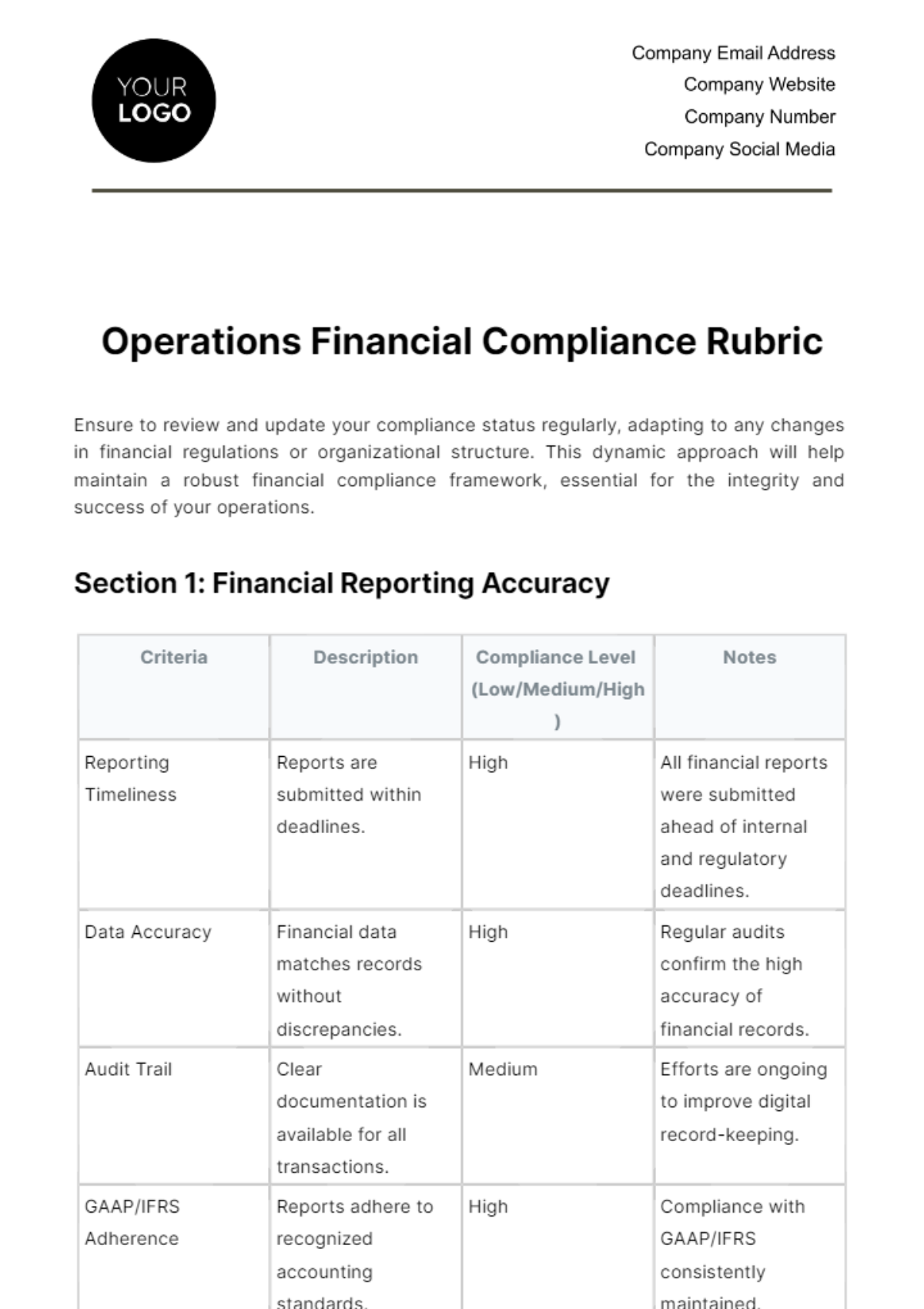
Ensure to review and update your compliance status regularly, adapting to any changes in financial regulations or organizational structure. This dynamic approach will help maintain a robust financial compliance framework, essential for the integrity and success of your operations.
Section 1: Financial Reporting Accuracy
Criteria | Description | Compliance Level (Low/Medium/High) | Notes |
|---|---|---|---|
Reporting Timeliness | Reports are submitted within deadlines. | High | All financial reports were submitted ahead of internal and regulatory deadlines. |
Data Accuracy | Financial data matches records without discrepancies. | High | Regular audits confirm the high accuracy of financial records. |
Audit Trail | Clear documentation is available for all transactions. | Medium | Efforts are ongoing to improve digital record-keeping. |
GAAP/IFRS Adherence | Reports adhere to recognized accounting standards. | High | Compliance with GAAP/IFRS consistently maintained. |
Section 2: Internal Controls
Criteria | Description | Compliance Level (Low/Medium/High) | Notes |
|---|---|---|---|
Segregation of Duties | Tasks are appropriately divided to prevent fraud. | High | Strong segregation enforced, significantly reducing risk. |
Access Controls | Access to financial systems is controlled and monitored. | High | Access controls are regularly reviewed and updated. |
Reconciliation Procedures | Regular reconciliations are conducted to ensure data integrity. | High | Monthly reconciliations have identified no significant discrepancies. |
Policy Adherence | Internal control policies are understood and followed by all staff. | Medium | Ongoing training programs are in place to improve adherence. |
Section 3: Tax Compliance
Criteria | Description | Compliance Level (Low/Medium/High) | Notes |
|---|---|---|---|
Filing Timeliness | Tax filings are completed on time. | High | No late filings in the past fiscal year. |
Payment Accuracy | All tax payments are accurate and timely. | High | Accurate payments verified by external auditors. |
Regulation Updates | The company stays informed about tax law changes. | High | Dedicated team in place to monitor tax law changes. |
Documentation | Adequate records are kept for all taxable transactions. | High | Comprehensive documentation practices exceed regulatory requirements. |
Section 4: Regulatory Compliance
Criteria | Description | Compliance Level (Low/Medium/High) | Notes |
|---|---|---|---|
Licensing | All necessary financial licenses are up to date. | High | Licenses reviewed and renewed bi-annually without lapses. |
Reporting Requirements | All regulatory reporting requirements are met. | High | Effective systems ensure timely and accurate regulatory reporting. |
Compliance Training | Staff receives regular training on regulatory compliance. | Medium | Bi-annual training sessions; plan to increase frequency. |
Monitoring and Auditing | Regular compliance audits are conducted. | High | Quarterly audits with external partners ensure compliance. |
Section 5: Financial Ethics and Conduct
Criteria | Description | Compliance Level (Low/Medium/High) | Notes |
|---|---|---|---|
Code of Conduct | A clear financial ethics code is in place and communicated. | High | Code of conduct is well-documented and accessible to all employees. |
Conflict of Interest | Policies to manage conflicts of interest are effectively implemented. | High | No reported conflicts of interest; policy appears to be effective. |
Confidentiality | Financial information is handled with strict confidentiality. | High | Strict protocols and training in place to ensure data protection. |
Anti-fraud Measures | Comprehensive anti-fraud measures are in place. | High | Advanced monitoring tools and regular training sessions minimize fraud risk. |
This detailed rubric showcases a comprehensive and nuanced approach to maintaining financial compliance across various critical dimensions of an organization's operations. Each section reflects a key area of financial compliance, with specific criteria assessed to provide a clear view of the organization's compliance landscape. The notes offer insights into the current status, highlight achievements, and suggest areas for improvement, ensuring a proactive and informed approach to financial compliance management. Regularly updating this rubric in response to internal changes and external regulatory developments will help your organization stay ahead in financial compliance, safeguarding its reputation and financial health.
- 100% Customizable, free editor
- Access 1 Million+ Templates, photo’s & graphics
- Download or share as a template
- Click and replace photos, graphics, text, backgrounds
- Resize, crop, AI write & more
- Access advanced editor
Experience the ease of documenting your financial compliance processes with the Operations Financial Compliance Rubric Template from Template.net. This highly customizable, professionally designed template is conveniently editable in our Ai Editor Tool, ensuring that it fits your individual operational needs. Its user-friendly features make financial management impressively efficient. Use our versatile template to ensure accuracy, optimize performance, and elevate your company's financial operations. Experience simplicity, precision and compliance made easy with Template.net!

